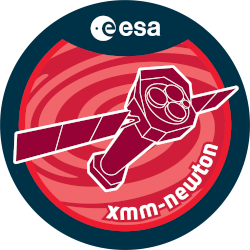

| Proposal ID | 050367 |
| Title | X-Ray Emission from Low-Mass Protostars in Two Small Dark Clouds |
| Download Data Associated to the proposal | https://nxsa.esac.esa.int/nxsa-sl/servlet/data-action-aio?obsno=0503670101 |
| DOI | https://doi.org/10.5270/esa-nyj5jxg |
| Principal Investigator, PI | Dr Theodore Simon |
| Abstract | A handful of Class I protostars have been detected in X rays, but no firmlyestablished Class 0 object has ever been detected as an X ray source. I amproposing to obtain 30 ks pointings with XMM of two small dark cloud regions,each of which is known to harbor high-velocity molecular outflows, long chainsof HH emission knots, and low-luminosity Class 0 IRAS sources. The goal of theobservations is to determine whether the X ray and other physical properties ofthese objects and their surrounding environments are different from those ofembedded protostars that form in much more massive clouds. Because of theirlower density and mass, these small clouds may be more transparent to X-rays andhence more easily probed than a dense cloud like Orion. |
| Publications |
|
| Instrument | EMOS1, EMOS2, EPN, OM, RGS1, RGS2 |
| Temporal Coverage | 2007-05-09T11:11:25Z/2007-07-31T18:41:29Z |
| Version | 17.56_20190403_1200 |
| Mission Description | The European Space Agencys (ESA) X-ray Multi-Mirror Mission (XMM-Newton) was launched by an Ariane 504 on December 10th 1999. XMM-Newton is ESAs second cornerstone of the Horizon 2000 Science Programme. It carries 3 high throughput X-ray telescopes with an unprecedented effective area, and an optical monitor, the first flown on a X-ray observatory. The large collecting area and ability to make long uninterrupted exposures provide highly sensitive observations. Since Earths atmosphere blocks out all X-rays, only a telescope in space can detect and study celestial X-ray sources. The XMM-Newton mission is helping scientists to solve a number of cosmic mysteries, ranging from the enigmatic black holes to the origins of the Universe itself. Observing time on XMM-Newton is being made available to the scientific community, applying for observational periods on a competitive basis. |
| Creator Contact | https://www.cosmos.esa.int/web/xmm-newton/xmm-newton-helpdesk |
| Date Published | 2008-09-27T00:00:00Z |
| Last Update | 2025-08-04 |
| Keywords | "XMM", "easily probed", "embedded protostars", "x ray emission", "physical properties", "iras sources", "am proposing", "massive clouds", "lower density", "xray source", "dark cloud region", "low luminosity class", "firmly established class", "low mass protostars", "velocity molecular outflows", "dark clouds", "hh emission knots", "dense cloud" |
| Publisher And Registrant | European Space Agency |
| Credit Guidelines | European Space Agency, Dr Theodore Simon, 2008, 'X-Ray Emission from Low-Mass Protostars in Two Small Dark Clouds', 17.56_20190403_1200, European Space Agency, https://doi.org/10.5270/esa-nyj5jxg |